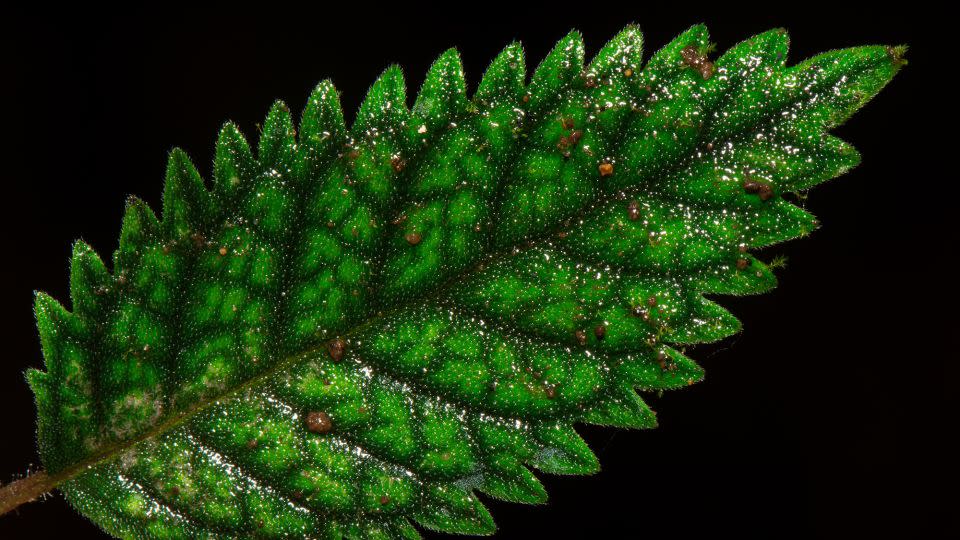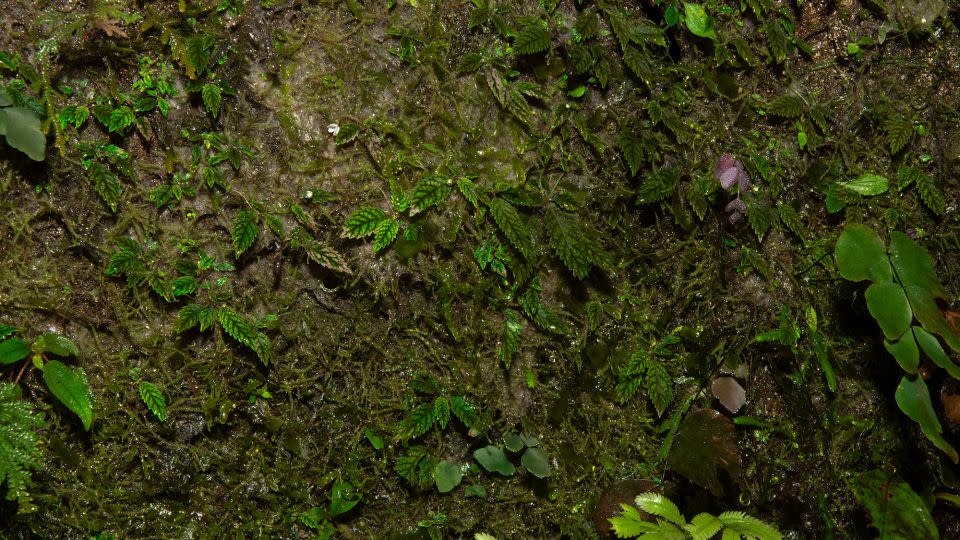Newly discovered species found in Ecuador lives up to its name, A. miraculum
Sign up for CNN’s Wonder Theory science newsletter. Explore the universe with news on fascinating discoveries, scientific advancements and more.
On the western slopes of the Andes in Ecuador, John L. Clark, a research botanist at Florida’s Marie Selby Botanical Gardens, happened upon what he calls a miracle.
In an area of formerly lush cloud forest known as Centinela devastated by clearing, Clark spotted a tiny, 2-inch-high (5-centimeter) plant with delicate white petals and spiky, iridescent leaves in 2022.
That he could see it at all, nestled there on a moss-covered rock in a remnant patch of untouched land, was impressive. That it was a never-before-documented species was even better. But the best part of all was the hope it gave Clark.
“That area was sort of written off as just agricultural wasteland,” he said. The diminutive flower told another story.
“A lot of the things that we thought were gone, they’re still there. And then on top of what we thought was gone, we found this,” said Clark, lead author of a paper describing the finding, published Tuesday in the journal PhytoKeys.
Back in the lab, Clark and his team confirmed that the little plant was a species new to science, and he and his team named it Amalophyllon miraculum.

“To find extant and undescribed species, in a degraded area that others may overlook, makes the research especially exciting,” said Laurence Skog, curator emeritus in botany at the Smithsonian Institution’s National Museum of Natural History in Washington, DC. He was not involved in the research. “What other areas of the world are we overlooking and need to visit for new discoveries?”
In the decades after World War II, western Ecuador lost more than 95% of its forests below 3,280 feet (1,000 meters), according to Martin Schaefer, head of the Jocotoco Conservation Foundation, which collaborated on the new study.
First came the loggers, then growing cities and clearing for cattle, palm oil and banana plantations. By the 1980s, deforestation reached Centinela, perched on an Andean ridge.
“The situation was already dire with very few forest fragments still surviving,” Schaefer said. “Each of these forest fragments protects highly threatened species and species found nowhere else.”
The devastation was documented in a 1991 study called “Biological Extinction in Western Ecuador.” A biodiversity hot spot seemingly had been extinguished. The renowned late naturalist E.O. Wilson coined the term “Centinelan extinction” to refer to the loss of entire species before they are even known and scientifically described due to wholesale habit loss.
But in the bits and pieces of forest that remain — mostly thanks to landowners who have chosen to preserve wild habitat on their properties — life, as it turns out, persists.

Clark’s research focuses on primarily tropical and subtropical flowering plants in the family Gesneriaceae, so he’s adept at spotting them in the wild. With a combination of a keen eye and good fortune, he saw a tiny bloom clinging to a mossy rock near a waterfall. The plant’s deeply serrated leaves and purple-green iridescence made it stand out to him immediately.
“I told my assistant, ‘Oh my gosh, hold the camera here. You gotta get this on recording, because this thing is amazing,’” Clark said. (The recording is on Clark’s Instagram page. To an untrained eye, it’s nearly impossible to see the plant about which he’s so excited.)
“It’s a miracle that the forests are still there. That’s why we decided to call it miraculum,” Clark said, crediting the farmers who chose not to cut down the trees on their land. “They’re heroes.”
The nonprofit Jocotoco works with landowners to help them get government funding for preserving forests on their properties. Recent botanical research such as Clark’s impelled the foundation to expand into Centinela.
“By now, some of our reserves have become the largest contiguous forests in their provinces,” said Schaefer, who has worked in Ecuador since 2002. “They are like Noah’s ark, ensuring the survival of thousands of species. This is what we will do for Centinela as well.”
Clark said he is excited for the support. The foundation typically touts the preservation of habitat for birds and other charismatic species, but in Centinela it’s promoting conservation of the forest for the benefit of plants — such as Amalophyllon miraculum.
Perhaps more miracles are in store. “Nature heals itself — if we allow it,” Schaefer said.
Amanda Schupak is a science and health journalist in New York City.
For more CNN news and newsletters create an account at CNN.com

 Yahoo News
Yahoo News 
